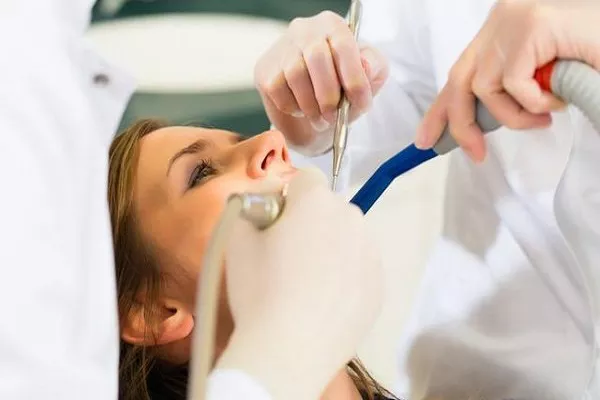Cavity fillings are a common dental procedure designed to restore teeth damaged by decay. While they are typically durable and long-lasting, there are instances where cavity fillings can fall out, leading to potential discomfort and the need for further dental intervention. Understanding the factors that contribute to the stability of cavity fillings and the circumstances under which they may become dislodged is essential for maintaining oral health.
Factors Contributing to Cavity Filling Stability:
Type of Filling Material: The type of material used for cavity fillings can significantly impact their stability. Common materials include amalgam, composite resin, gold, and porcelain. Amalgam fillings, for instance, are known for their durability and resistance to wear, while composite resin fillings offer aesthetic benefits but may not be as resilient.
Size and Location of the Cavity: The size and location of the cavity being filled also play a role in the stability of the filling. Larger cavities may require more extensive preparation of the tooth, which can affect the bonding of the filling material. Cavities located in areas of the mouth subjected to greater chewing forces may also be more prone to dislodgment.
Quality of the Dental Work: The skill and expertise of the dentist performing the filling procedure are crucial factors in ensuring its stability. Proper preparation of the cavity, effective bonding of the filling material to the tooth structure, and adequate shaping and polishing all contribute to the longevity of the filling.
Oral Hygiene Practices: Good oral hygiene habits, including regular brushing, flossing, and dental check-ups, are essential for maintaining the integrity of cavity fillings. Poor oral hygiene can lead to the accumulation of plaque and bacteria around the filling, increasing the risk of decay and potential dislodgment.
Chewing Habits: Individuals with habits such as teeth grinding (bruxism) or chewing on hard objects may put additional stress on their dental fillings, increasing the likelihood of them coming loose or falling out. Dentists may recommend protective measures such as wearing a nightguard to mitigate the effects of bruxism.
Common Reasons for Cavity Filling Dislodgment:
Decay or Damage: Despite the best efforts of both the patient and the dentist, cavity fillings may become dislodged if decay develops around the edges of the filling or if the tooth sustains further damage, such as a crack or fracture.
Wear and Tear: Over time, cavity fillings can experience wear and tear from normal chewing and biting forces. This wear may eventually compromise the integrity of the filling, leading to its failure.
Poor Bonding: In some cases, cavity fillings may not bond securely to the tooth structure, either due to inadequate preparation of the tooth surface or issues with the bonding agent used. Poor bonding can result in the filling loosening or falling out altogether.
Trauma: Traumatic events such as a blow to the face or a sports-related injury can dislodge cavity fillings, especially if they are already compromised or if the force of the impact is significant.
Deterioration of Filling Material: Certain filling materials, particularly amalgam, may expand and contract with changes in temperature, leading to gradual deterioration over time. This deterioration can weaken the filling and increase the risk of it falling out.
Prevention and Treatment Options:
Regular Dental Check-ups: Routine dental examinations allow dentists to monitor the condition of cavity fillings and identify any signs of deterioration or damage early on. Prompt intervention can help prevent fillings from falling out and address any underlying issues before they worsen.
Maintaining Good Oral Hygiene: Practicing good oral hygiene habits, including brushing twice a day, flossing daily, and using antimicrobial mouthwash, can help prevent decay and prolong the lifespan of cavity fillings.
Avoiding Bad Habits: Individuals should avoid habits that can put undue stress on their dental fillings, such as chewing on hard objects, using teeth as tools, or clenching and grinding teeth. Dentists may recommend lifestyle modifications or the use of protective appliances to minimize the risk of filling dislodgment.
Choosing High-Quality Materials: When undergoing cavity filling procedures, patients should discuss their options with their dentist and choose materials known for their durability and longevity. While aesthetic considerations are important, prioritizing the stability and functionality of the filling is crucial for long-term oral health.
Seeking Prompt Treatment: If a cavity filling does fall out or become dislodged, it is essential to seek prompt dental treatment. Leaving the tooth untreated can lead to further decay, infection, or structural damage, potentially necessitating more extensive and costly procedures in the future.
Conclusion:
In conclusion, while cavity fillings are designed to be durable and long-lasting, they can still fall out under certain circumstances. Factors such as the type of filling material used, the size and location of the cavity, oral hygiene practices, chewing habits, and the quality of dental work all influence the stability of cavity fillings. Preventive measures such as regular dental check-ups, maintaining good oral hygiene, avoiding bad habits, choosing high-quality materials, and seeking prompt treatment for any issues that arise can help minimize the risk of cavity filling dislodgment. By understanding these factors and taking proactive steps to protect their dental fillings, individuals can maintain optimal oral health and preserve the integrity of their smiles for years to come.
How much does an average cavity filling cost
How Much It Cost To Fill Cavity
Can Swallowing A Filling Hurt You





























